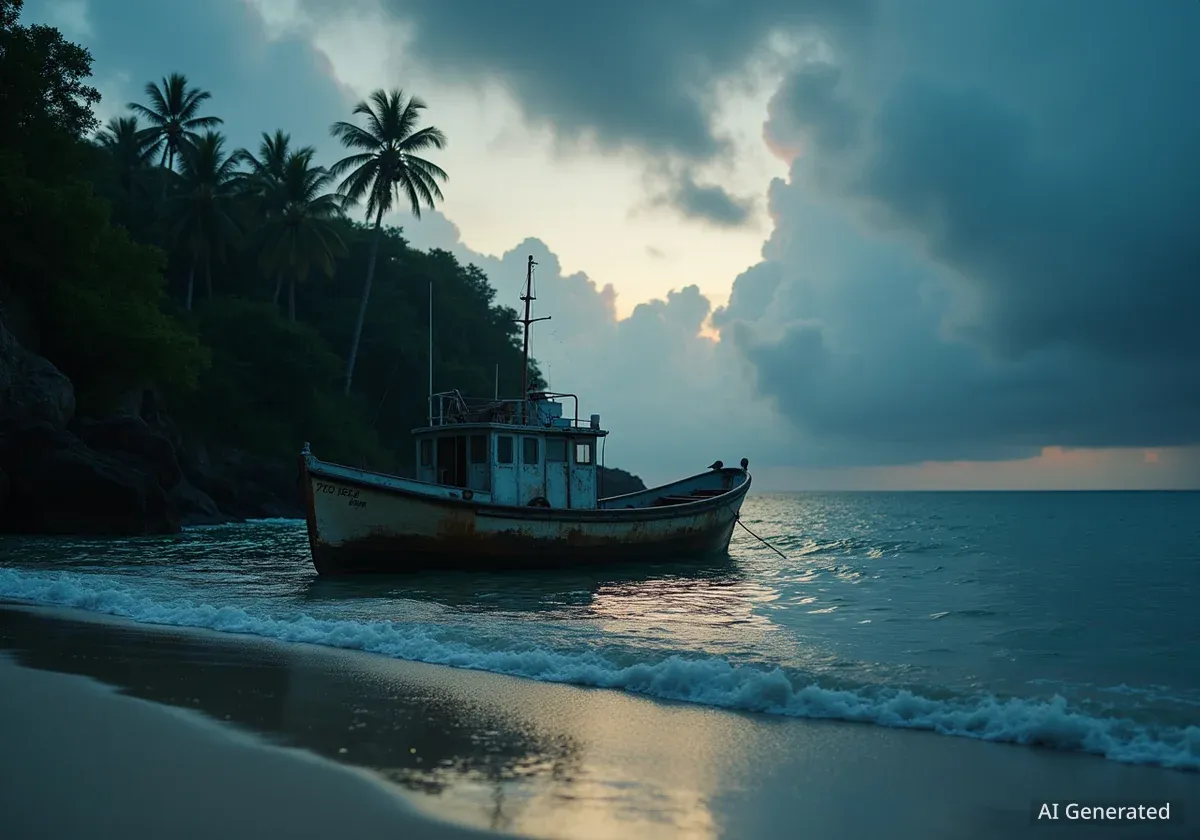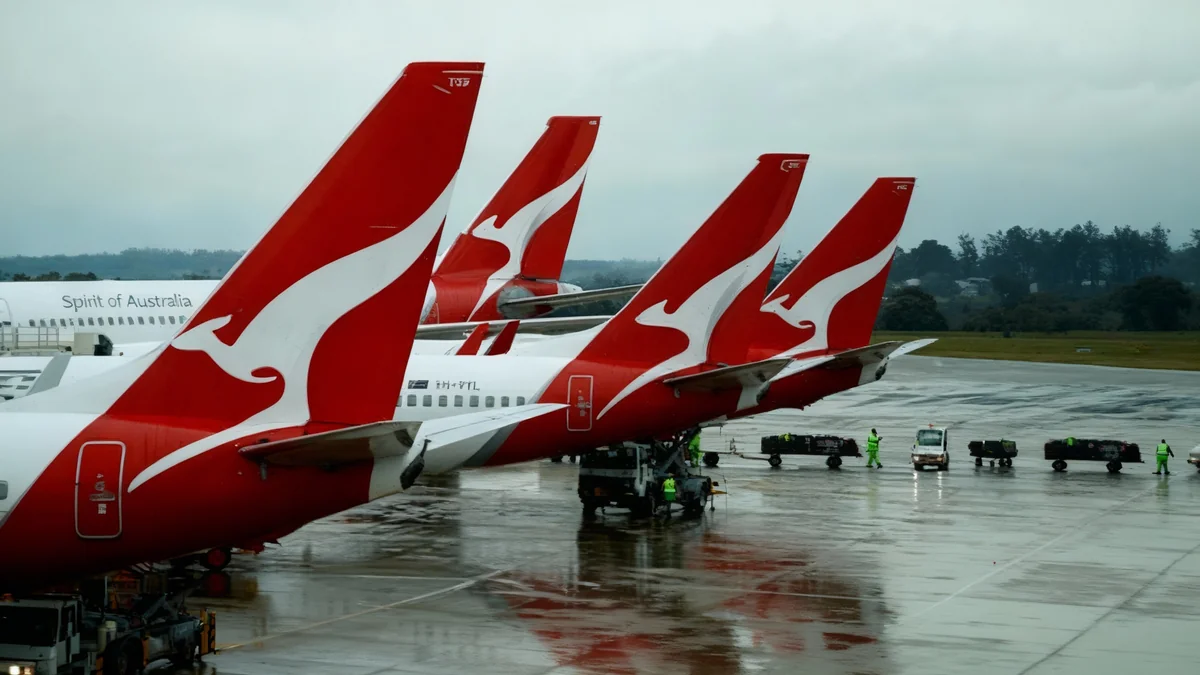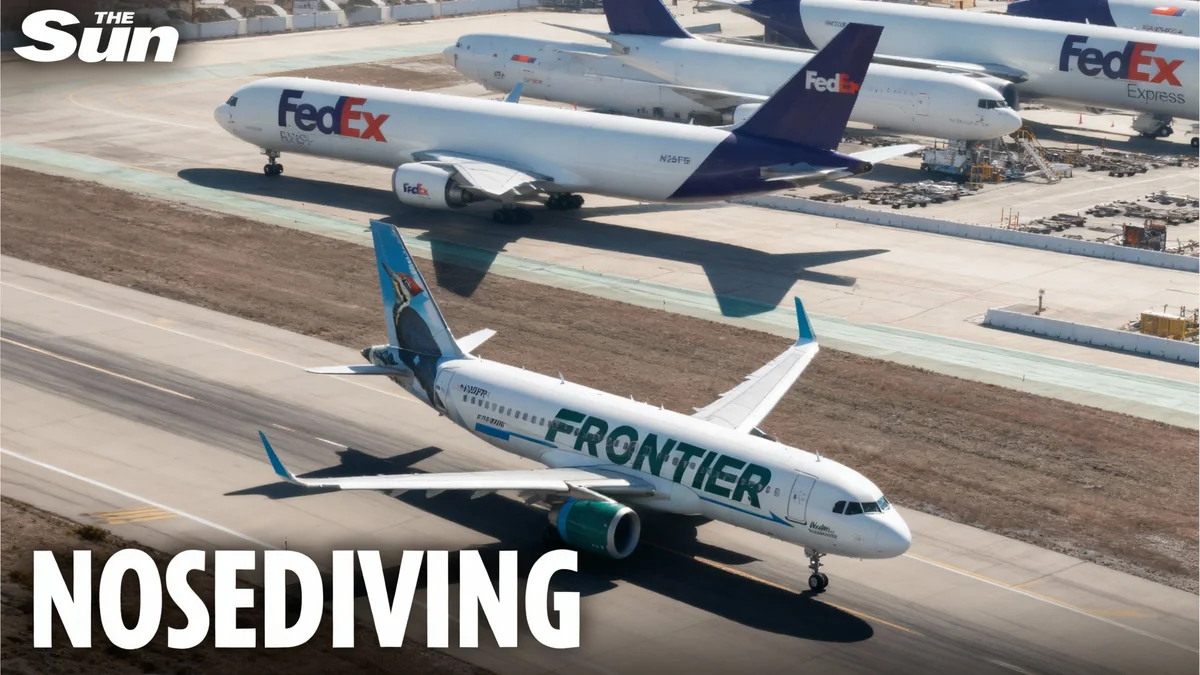An expedition aimed at solving the 88-year-old mystery of Amelia Earhart's disappearance has been postponed until 2026. Researchers planning to investigate a potential wreckage site on the remote Pacific island of Nikumaroro have delayed their mission due to the start of the region's cyclone season and pending government clearances.
The team, a joint effort by the Purdue Research Foundation and the Archaeological Legacy Institute, was scheduled to depart on November 4, 2025. Their goal is to examine a satellite anomaly, dubbed the "Taraia Object," which some believe could be the remains of Earhart's Lockheed Electra aircraft that vanished in 1937.
Key Takeaways
- The "Taraia Object Expedition" to Nikumaroro Island has been rescheduled from November 2025 to 2026.
- The delay is caused by the onset of the South Pacific cyclone season and the need for additional government clearance from Kiribati.
- Researchers aim to investigate a satellite anomaly they believe could be the wreckage of Amelia Earhart's lost aircraft.
- The expedition is based on the theory that Earhart landed on the island and did not crash into the ocean.
Expedition Halted by Weather and Red Tape
The much-anticipated search for one of aviation's greatest lost relics has hit a significant snag. The Purdue Research Foundation and the Archaeological Legacy Institute confirmed the delay in a recent press release, citing logistical and environmental challenges.
"The decision comes as the team awaits additional clearance from the Kiribati government and as seasonal weather challenges kick in over the Pacific Ocean during winter months," the statement explained. The South Pacific cyclone season typically brings unpredictable and dangerous weather, making a complex remote expedition unsafe.
The team had planned to sail from Majuro in the Marshall Islands to Nikumaroro, an uninhabited atoll situated roughly halfway between Hawaii and Australia. The postponement pushes the ambitious project back by more than a year, allowing for a safer weather window and time to secure all necessary permits.
Who Was Amelia Earhart?
Amelia Earhart was a pioneering American aviator who broke numerous records. On August 24, 1932, she became the first woman to fly solo and nonstop across the United States. She also had a strong connection to Purdue University, where she served as a career counselor for female students and an advisor to the aeronautical engineering department.
The Taraia Object and the Nikumaroro Theory
The central focus of the expedition is a mysterious feature identified in satellite imagery of Nikumaroro. This anomaly, named the "Taraia Object," is what researchers hope could finally be the wreckage of Earhart's twin-engine plane.
This search is rooted in a long-standing hypothesis that challenges the official account of Earhart's disappearance. The prevailing theory is that Earhart and her navigator, Fred Noonan, ran out of fuel and crashed into the vast Pacific Ocean while searching for their next refueling stop, Howland Island, on July 2, 1937.
However, proponents of the Nikumaroro theory believe the pair may have spotted the atoll after failing to find Howland Island. They suggest Earhart managed to land the plane on a reef flat and survived for some time as castaways before ultimately perishing. Over the years, various artifacts have been found on the island that some researchers claim could be linked to the lost aviators.
The Final Flight
- Aircraft: Lockheed Model 10-E Electra
- Date of Disappearance: July 2, 1937
- Intended Route Leg: Lae, New Guinea, to Howland Island
- Crew: Amelia Earhart (pilot) and Fred Noonan (navigator)
Skepticism Remains Among Experts
While the Nikumaroro theory has captured public imagination, it is not universally accepted by experts. Many historians and aviation specialists maintain that the most logical explanation remains the simplest one: the plane was lost at sea.
Dorothy Cochrane, the curator for the Aeronautics Department at the Smithsonian's National Air and Space Museum, has previously stated that there is "no real mystery" surrounding the disappearance.
"Amelia and [navigator] Fred [Noonan] were on the right path. They had the course to get to nearby Howland Island. … It was such a small island in the middle of nowhere, and there were radio communications issues; they could not find it before they ran out of fuel," Cochrane explained.
She believes the search should be concentrated in the waters around Howland Island, where the U.S. Coast Guard was awaiting their arrival. Other theories, such as Earhart being captured by the Japanese or acting as a spy for the U.S. government, have been widely dismissed by mainstream historians.
The Enduring Search for Answers
The postponement of the Taraia Object Expedition is the latest chapter in a decades-long effort to find conclusive evidence of Earhart's fate. The story continues to fascinate the public and inspire researchers to invest significant time and resources into solving the mystery.
The Purdue Research Foundation's involvement stems from Earhart's historical ties to the university, which helped finance her Electra aircraft. Their commitment to the search underscores the deep legacy the aviator left behind.
Despite past government efforts, including an order by former President Donald Trump to declassify all related records, no definitive proof has emerged. Steven Schultz, chief legal officer of the Purdue Research Foundation, noted that to their knowledge, "there are no such records that remain to be unclassified."
For now, the world must wait until 2026 to see if the expedition to Nikumaroro will finally provide the answers that have been sought for nearly a century.





